1. Introduction
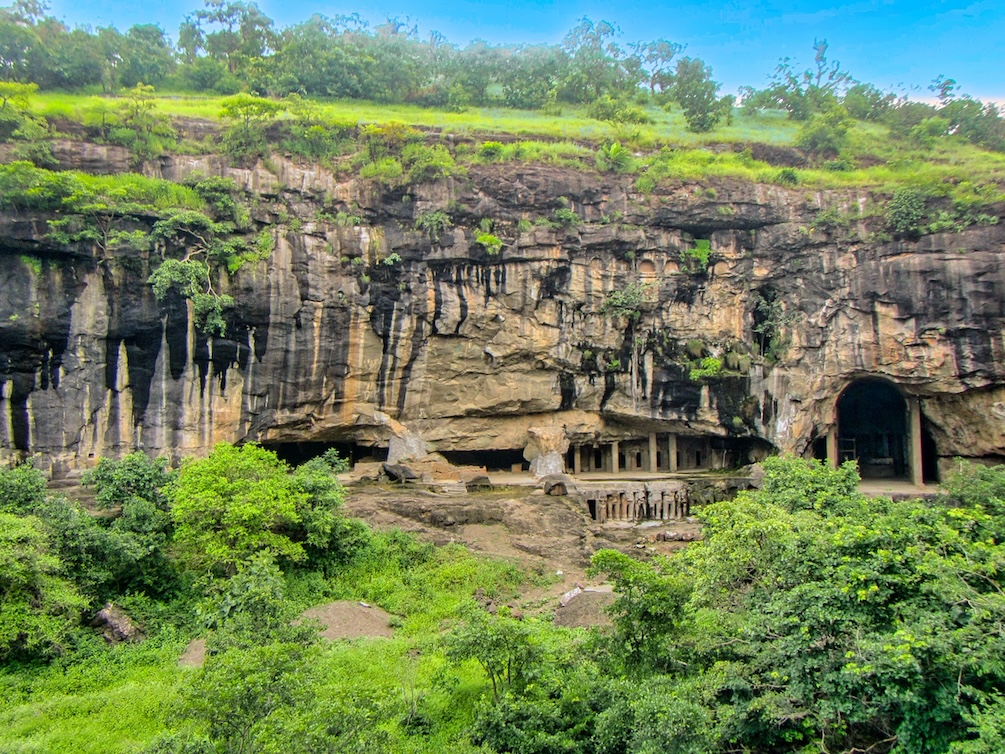
“…but when the Pipal-khora [the name of the ravine in which the caves are concealed] is gained, the scene of grandeur passes any description I can give. It is awfully and fearfully grand and beautiful.”
—Captain James Rose in 1851, on Pitalkhora Caves
Indian rock-cut architecture stands as the first paramount example of art hitherto. The remarkable Buddhist caves at Pitalkhora are one of the finest representations of early Indian artistic traditions. These caves are located in the rocks of the Satmala hills, in the northern fringes, almost 42 miles away from Aurangabad or the Chhatrapati Sambhajinagar district of Maharashtra. This monastic cave complex was initially ascribed by John Wilson in 1853, giving a brief survey of the chaitya-cave number 3 and vihara-cave number 4. In their seminal work ‘Cave Temples of India,’ Fergusson and Burgess gave a vivid account of these caves. In the later years, M. G. Dikshit provided a brief overview of the caves, placing particular emphasis on the evolution of their architectural styles.
Pitalkhora is often referred to as the ‘Brazen Glen’ due to its metal-brass-like appearance. This rock-cut site of western India, is the abode of 14 caves. The caves have been hewn into the vertical cliffs on both sides of a gorge. Five of these are chaityagrihas, while the rest are viharas. Though the artwork reflects Mahayana influences, the architectural style of the caves is Hinayana. This site has been associated with Petrigala, as mentioned by Ptolemy, and Pitangalya, which is in the Buddhist scripture Mahamayuri as the dwelling of a yaksa named Sankarin. As M. N. Deshpande states, the inscriptions found here date back to approximately 250 BCE to the third and fourth centuries CE. The caves can be categorized into two groups: those located to the right of the ravine, i.e., Group 1, and those to the left, i.e., Group 2.
2. Pitalkhora in Early Times

As Deshpande, remarks Pitalkhora lay on the ancient caravan route called Sarthavaha Patha. Indhyadri hills, close to these caves, were the point of crossing for the routes from Nasik and Sopara to Pratishthana, the capital of the Satavahanas. Shri Pramod Chandra of Prince of Wales Museum, Bombay drew the attention to the list of yakshas provided in Mahamayuri. James Burgess alongside Bhagwanlal Indraji figured that cave inscriptions were largely from donors of Pratishthana, giving weight to the notion that Pitalkhora was a connecting route.
Khandaka (lives) at Pratishthāna, Sankārin at Pitańgalya, Sukhāvaha at Tarangavati, Sundara at Näsikya, Asańga at Bharukachchha.
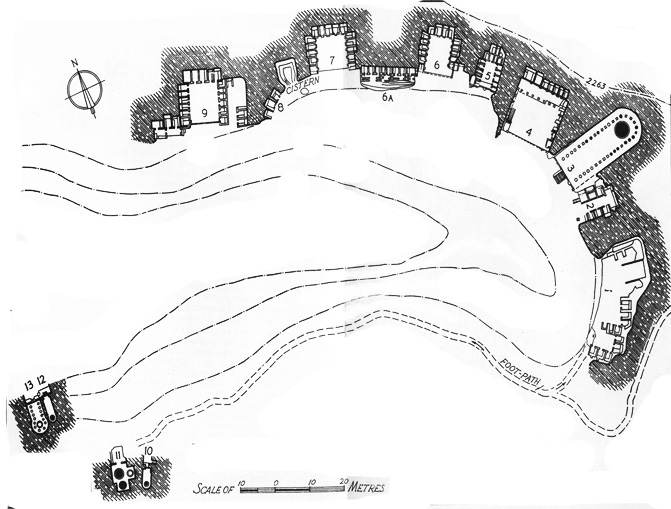
Herein, Nasikya can be identified as Nasik, Bharukaccha as Broach, Tarangavati as Taranga. Pitangalya can be a call-back to Ptolemy’s Petrigala and can also be proclaimed as the early nomenclature of Pitalkhora. Deshpande states that if this interpretation is accurate, then the places mentioned in this list almost correctly follow the ancient Pratishthana-Bharukachcha (present-day Barygaza) route. Politically, these caves belonged to the Satavahana-Kshaharata and Vakataka regimes. Scholars date the occupation of caves in two phases: just from the Christian era and then the 5th-6th centuries C.E. It is to be noted that there is no sculpture of Buddha or any Bodhisattva in the caves. ASI held the reins of conservation in 1957 under leadership of M. N. Deshpande.
3. Architectural Analysis
At Pitalkhora, a ravine separates the collection of rocks. These rock caves, carved in soft basalt, are suitable for building large abodes or residential structures. Although these caves date back to the Hinayana phase, they were also inhabited during the Mahayana period.
3.1 Caves: Group 1
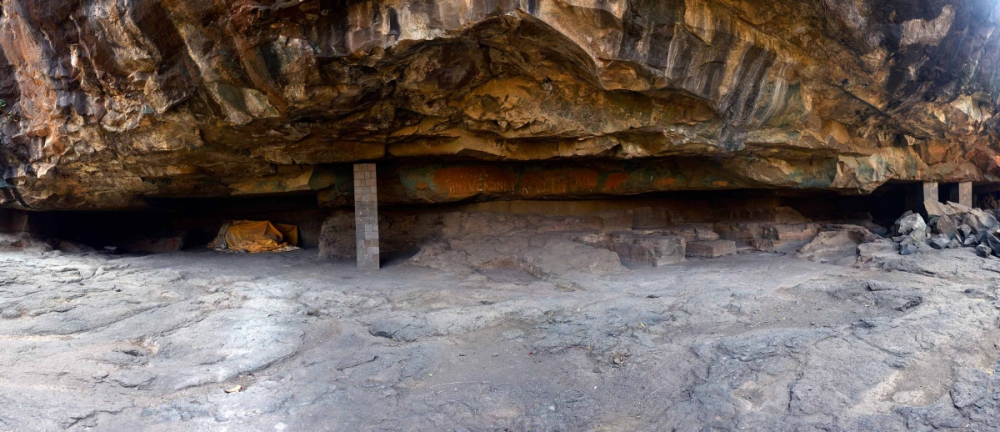
This set of caves houses the first ten caves, i.e., Cave 1 to Cave 9, including Cave 6A. The first cave is demolished with a natural entrance; it has wooden benches and doors, which indicates that it had myriad rock-cut viharas. There is a forecourt, which reveals a flight of stairs leading to Caves 2, 3, and 4—signifying their common timeline of construction. Of these, Cave 3 has been intriguingly described in detail by Fergusson and Burgess. It was a Chaitya cave, with 37 octagonal pillars between the hall and an aisle. Two early inscriptions are found in the said pillars, recording the donation of Mitadeva of the Gadhika family and the sons of Samghaka, both hailing from Pratishthana. In the staircase on either side, there are sculptures in low relief of prancing winged horses and yakshas.

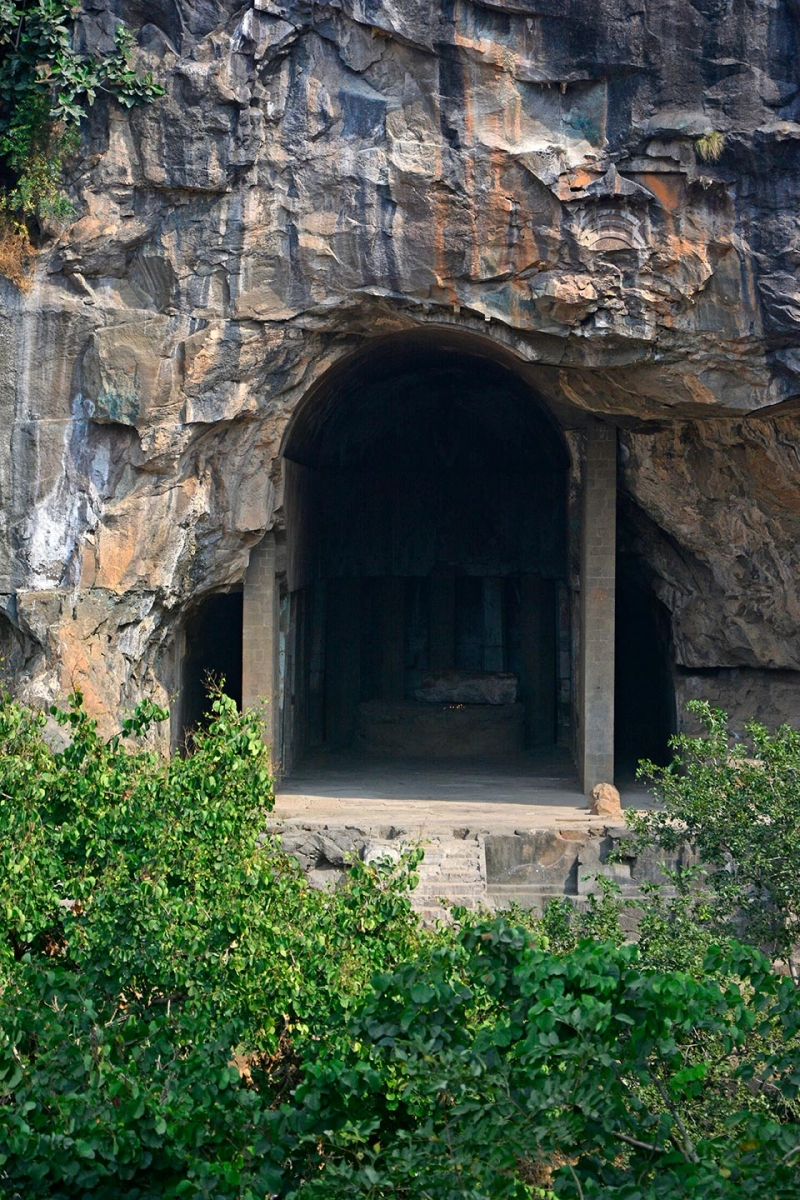
Cave 5, also heavily demolished, had a stupa in its hall once. The sixth cave is rectangular with cells everywhere, and Cave 6A comprises the damaged remains of eight cells in one row, also a vihara. Cave 7, a vihara, has fifteen cells.
3.2 Caves: Group 2
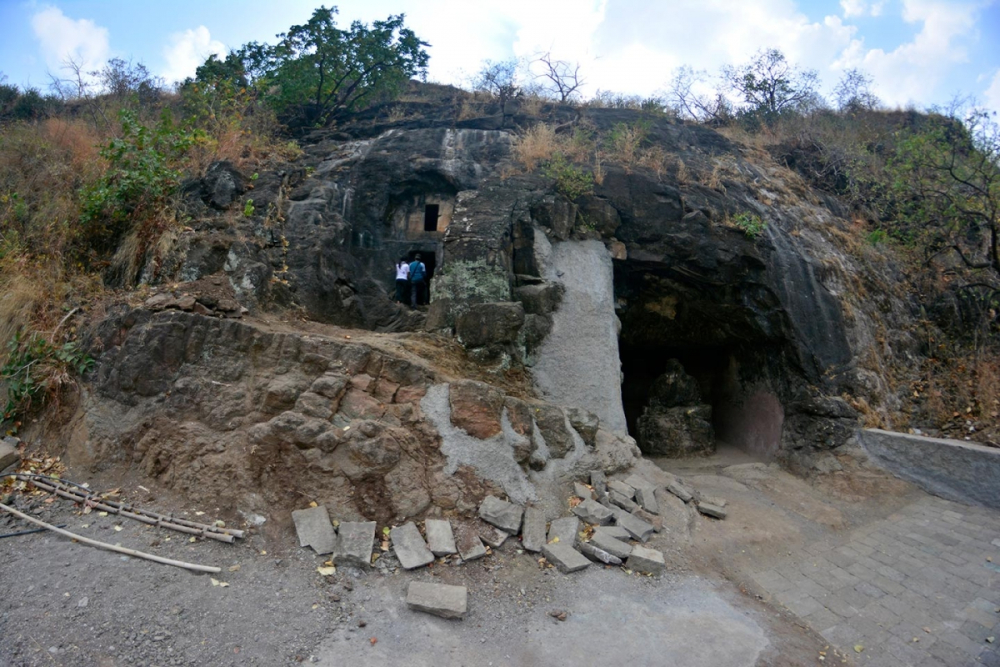
This set starts with Cave 10 to Cave 13. Herein, the interior apse-like hall measures approximately 17.5 feet in depth and 8.5 feet in width. At the apse, there is a stupa featuring a tapered drum, which is a distinctive element not seen in other examples. At the top of the stupa, a vedika railing rests beneath a semicircular dome. Part of the harmika remains preserved. Cave 11 contains three rock-cut stupas, with two in ruins and the third retaining its harmika. Caves 12 and 13 share an identical forecourt and function as Chaityagrihas. The base and dome showcase joint feature embellishments that incorporate the vedika design. Carvings of male and female heads can be found at the center of each side of this vedika.
4. Vivid Motifs and Sculptures


These descriptions are brief, and no amount of elaboration will do justice to the architectural marvel of the Pitalkhora caves. The sculptures and their motifs here are most unique and carry history in every rock. The Gaja-Lakshmi is a recurring motif, with Lakshmi seated on a half lotus wearing ornaments and surrounded by elephants on either side. These have been found on the debris of Cave 4. Yakshas and Yakshis are found in large numbers—from male yakshas raising their hands holding a bowl to a yaksha being a dvara-pala of Cave 3, from a dwarf yaksha and sophisticated chauri-bearer to a yakshi with a casket over her head. Musical instruments and musicians are depicted significantly. Pillars showcase women playing an instrument and instruments like a gourd with a curvy handle on one end tied with seven strings. There are various kinnaras, gandharvas, mithunas, and royal couples, and seven crystal objects are also recovered.
7. Conclusion: A Tumultuous Condition?

The Pitalkhora caves are subject to damage and weathering, which sparks concern for proper maintenance and conservation efforts. The organizations are being questioned as to why this neglect is still continued. Dulari Qureshi proclaims that these paintings have been deprived of chemical treatment, which is unfortunate. Myriad professionals are raising their voices, saying that this melting pot of ancient trade routes must not be left fallow for the future generations. As reported by TOI, “Unstable slopes, huge rock overhangs, and seepage problems” are the reason for damage to caves. These issues and conditions make us question our ‘progress.’ The Pitalkhora caves are not just isolated ancient monuments; they are living, breathing anecdotes of past-present dialogues. Their conservation and restoration are paramount and in dire need.
References:
- Deshpande, M.N. The Rock-cut Caves of Pitalkhora in the Deccan, in ANCIENT INDIA: Bulletin of the Archaeological Survey of India, 1959.
- Pitalkhora: “Brazen Glen” of Western India | Sahapedia. (n.d.). Sahapedia. https://www.sahapedia.org/pitalkhora-brazen-glen-of-western-india
- Saxena, S. (2024, August 25). Saurabh Saxena. https://puratattva.in/pitalkhora-remnants-of-trades-and-buddhism/
- Bhirud, Rashmi (Sarla) (2023) Animal depictions at Pitalkhora caves in northern Maharashtra, in Animals in Archaeology: Integrating Landscapes, Environment and Humans in South Asia (A Festschrift for Prof. P.P. Joglekar) Volume 2 (Pankaj Goyal, Abhayan G.S., and Sharada Channarayapatna Eds.), pp. 533-544. Thiruvananthapuram: Department of Archaeology, University of Kerala.
- Joshi, P. (2017, March 8). Ancient paintings at Pitalkhora caves on the verge of extinction. The Times of India. https://timesofindia.indiatimes.com/city/aurangabad/ancient-paintings-at-pitalkhora-caves-on-the-verge-of-extinction/articleshow/57515220.cms




